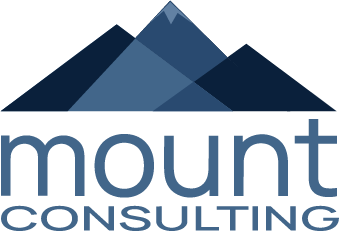JORT KOLMAN & THIJS PEETERS
ESG data stress – Part 2
In our previous Insight on ESG Management, Jort Kolman and Thijs Peeters elaborated on the availability of ESG data for reporting and risk management. This insight focusses on data stress, due to the accuracy and ambiguity of ESG data once obtained.
SETTING THE SCENE
The scope of this Insight focusses on ESG reporting and ESG risk management.
ESG Reporting is the disclosure of environmental, social, and governance data, and an ESG report is designed to provide transparency over the organization’s environmental, social, and governance impact across a multitude of stakeholders, including investors, employees, and customers. In line with the regulations for disclosure.
ESG Risk Management contains all practices, techniques, and behaviours that aim to identify, measure, and mitigate ESG risks to an individual or organization.
For both reporting and risk management, availability and reliability of data is a serious thing. The disclosure requirements from the various regulations include a substantial amount of new data attributes that must be collected outside the organization. Data availability to ensure completeness of ESG Reporting is currently by far the biggest stress. Insight ESG Data Stress – Part 1 provides a view on the landscape of data vendors and the companies’ own opportunities generating data for the new data attributes.
This Insight touches upon the complexity of the ESG transformation concerning the accuracy and ambiguity of ESG data once obtained.
MANAGE ESG DATA QUALITY: CAN YOU LEVERAGE ON YOUR CURRENT DATA GOVERNANCE?
The various regulations entail unique reporting requirements, but at the same time demand multiple uniform data needs, as shown by this example:

*Sector specific regulation, still to be completed
These various disclosure obligations as well as the requirements to measure transitional and physical risk, trigger many departments or functions acting. We stress organizations avoiding the pitfall to assign the implementation of the specific regulation to a stand-alone function or department and, consequently, prepare data requirements silo-based. A mess with unambiguous data definitions and non-aligned requirements across the organization, is mostly the result.
Quality of data comes with clear ownership of data. We encourage central coordination of the implementation of ESG driven regulations. Start with a robust data governance – or leverage on the existing data governance sustaining the data quality of management and regulatory reporting and risk modelling – and assess the overlap of data needs across the various regulations. Yes, there are multiple new data needs, however a significant part of the data attributes in scope is already covered in existing reporting chains for e.g., FINREP, COREP, or Solvency II QRTs. Ensure single ownership for the new ESG data requirements and data attributes across the front offices/investment managers, finance, and risk. Data ownership means accountability. Accountability for concrete and unambiguous ESG data definitions and accountability for data quality.
PROCESSING AND REPORTING: CAN YOU LEVERAGE ON YOUR CURRENT DATA INTEGRATION ARCHITECTURE?
How to organize data ownership?
Clear data governance as well as a clear data integration architecture are the key pillars for effective assignment of data ownership. During our ESG Round Table in November 2022, the attendees of the various financial institutions were very clear and united on the design of an ESG reporting and data integration chain: no additional highway for again another reporting and modelling requirement. ESG reporting and ESG risk management must leverage on the existing organization and operational processes.
We recommend building out the current Finance & Risk operating model and data integration architecture for the functions and activities that are needed for ESG reporting and risk management. The operating model is reference for new process design -leveraging existing processes and systems as effective as possible – and assigning responsibilities for requirements setting and assigning data ownership. As such, the operating model is the organization’s foundation working towards regulatory compliant ESG reporting and risk management.
A robust architecture is the basis to efficiently fulfil ESG data demands across the value chain. It enables effective sourcing, processing, and transformation of the required data attributes, and allows to reconcile the data with the detailed assets and exposures on the balance sheet. Once defined, it can be used as the beacon to realize the companies’ strategy for ESG reporting and risk management and as reference managing (ad hoc) ambitions and expectations from senior stakeholders within the organization.
WOULD AN ESG DATA SERVICE CENTRE HELP?
One can opt to centralize the design of the ESG data integration processes and coordinate the gathering of data requirements. Such centralized services could help avoiding the pitfall of silo-based data gathering. The ESG Data Service Centre acts upon the various stakeholders dealing with the same topics. It can be an instrument to manage the expertise on the new and evolving regulations and synergize the use and distribution of this expertise. It can define and manage single methodologies for reporting and data requirements gathering, definition of ESG data attributes, and maintain a single voice for data sourcing. Towards data vendors, and, within the organization, towards data sourcing business and country units.
HOW CAN WE HELP?
Mount Consulting advises various financial institutions on the implementation of ESG reporting and ESG risk management. From the interpretation of the ESG driven regulations up to the implementation of regulatory compliant reporting and risk management.
Please look at our ESG Service Proposition or contact us.
Want to know more?
We like to talk about our business and how we can help you!
